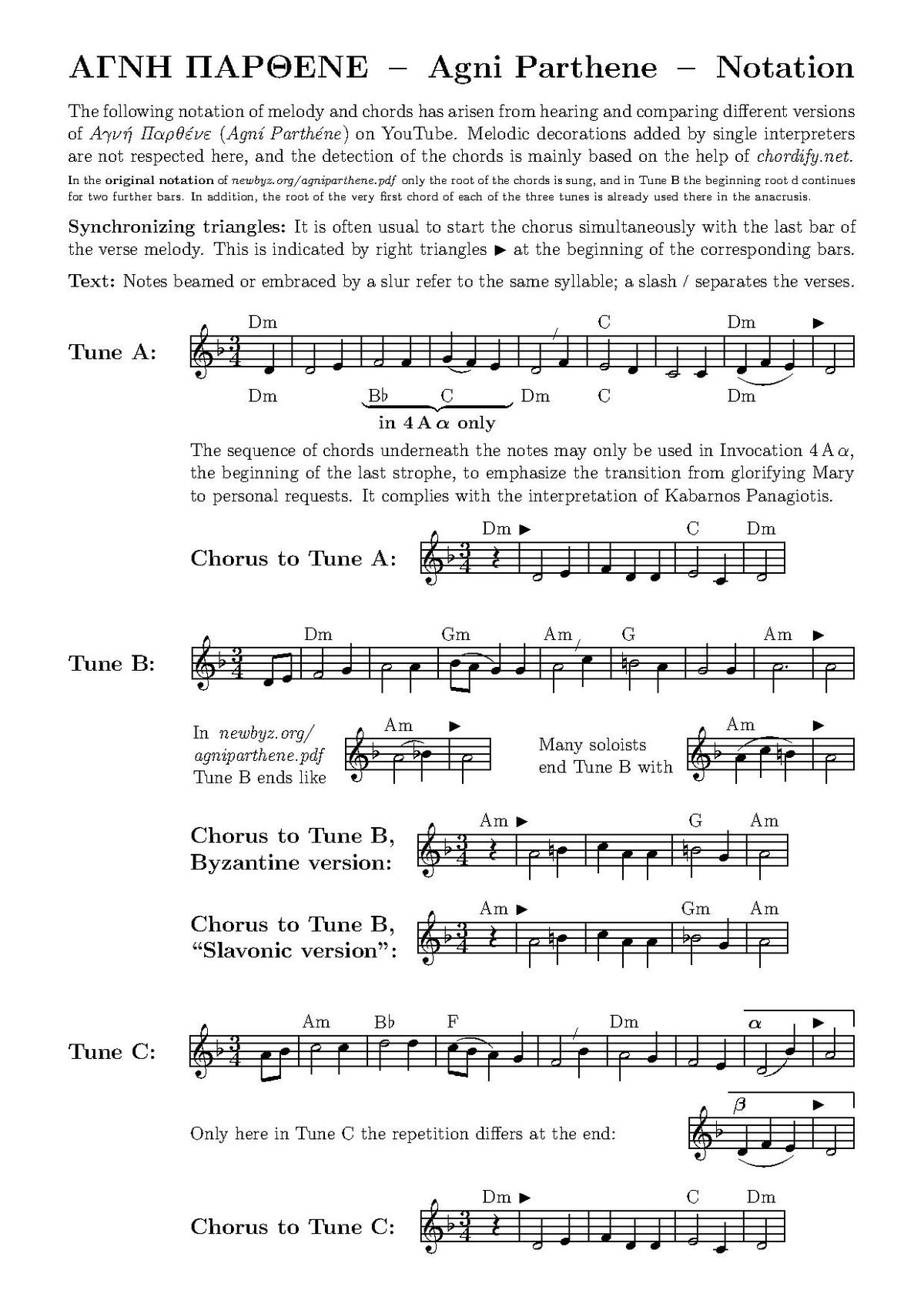Agni Parthene (Gr. Αγνή Παρθένε) is a non-liturgical hymn composed in Greek by St. In the 19th century during his tenure as director of the Rizarios Theological School of Athens. Nektarios liked to compose hymns in honor of the to deepen his personal prayer and relationship with her. The tradition passed down at the monastery of St. Nektarios, in Aegina, Greece, is that the Lady herself appeared before him and requested that he record on paper a particular hymn the angelic choirs were about to sing.

This hymn was the 'Agni Parthene'. The original script can still be viewed on his prayer table in his bedroom at this monastery. The original melody to this hymn was composed by an Athonite hymnographer who is said to also have had a vision of the Virgin Mary prior to composing the work.  The recording of this melody by the Monks of Simonopetra has contributed significantly to the popularization of the hymn.
The recording of this melody by the Monks of Simonopetra has contributed significantly to the popularization of the hymn.

The proactive screening is a component, which makes it possible to notice a newly malicious program long before. Agni Parfene Valaam Variant Of The Note. 
Due to its popularity, the hymn has been translated into many langauges and the original melody has been adapted to suit the particular style of church chanting. One such variation is the Valaam Monastery chant of the Russian translation. The hymn of the Pure Virgin is part of A Small Theotokarion (Athens, 1905) a book of Hymns to the Mother of God, written by St. This hymn has been used during communion in the Liturgy and it is sometimes chanted at the beginning of. Sources • • • The monk of Simonopetra on Mt Athos, has stated that he was writing music not to be sung in church - but during work, on walks, etc. This is not a liturgical hymn, and it it wrong to use it during services.
It is not in the form of a liturgical hymn - it is a two-part, antiphonal song of praise. In Greece it is sung in concerts, never in church. External links • • • Other YouTube versions:,,,,,, • • •.
Latest Pages
- Speakonia Voices Online
- Soglashenie O Nekonkurencii S Rabotnikom Obrazec Rk
- Promodel Crack
- Free Windows Xp Media Center Edition 2005 Download Deutsch Iso And Torrent 2016
- 3d Max Gotovie Raboti
- Indrani Perera Mathakaya Asurin Mp3 Downloads
- Asreml Download Free
- Download Aspe Data Book Volume 3 Pdf To 1
- Minecraft Disneyland Map Download 152
- Chem Otkritj Fajl Sii
- Pdf To Dsn Converter Weight Google
- Download Game Onet Pokemon
- 3d Modeli Dlya Chpu Po Derevu